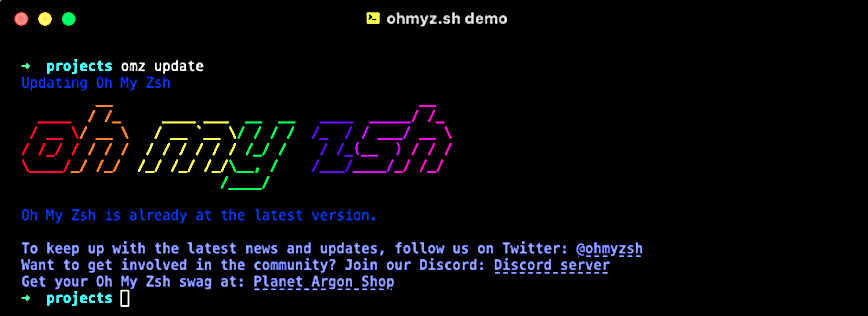Linux Server DIY Projects for Beginners
As a Linux newbie looking for DIY projects, you have plenty to choose from. Linux is full of hands-on learning and experimentation opportunities. From virtualization to server management and security, there’s a project for every beginner who wants to learn Linux.
In this article, we will look at some DIY Linux projects for beginners. These projects will give you practical experience and help you understand different aspects of Linux.
Why DIY projects on Linux?
For beginners, Linux is not just an operating system; it’s a way to understand how computers and networks work. The Linux community is all about collaboration where members share their experiences and projects, like Unixdude from linuxcommunity.io, who used m5stack as a display for Home Assistant and inspired this article. Doing different Linux project ideas will help beginners to improve their skills and creativity with Linux.
While m5stack doesn’t run Linux, it’s often used with Linux-based systems and devices, especially in IoT (Internet of Things) projects, home automation and similar applications where integration with a more complete system (like a Linux server running Home Assistant) is useful. This made me think about the many possibilities Linux offers to DIY beginners.
Creating your Linux Home Server

The Raspberry Pi makes an excellent Linux home server
Turning an old computer or Raspberry Pi into a home server with Linux will help you learn about server management and network configurations. A Linux cloud server can also be used for remote connections and storage, it’s versatile. It’s a fun way to repurpose old hardware and get practical experience. Also, read Must-Have Devices to boost your Linux skills.
Ubuntu Server
Ubuntu Server is a good choice for your home server, it’s stable and user-friendly. Whether you want to share files, host a website or run a media server, Ubuntu Server is a solid base.
Fedora Server
Fedora Server is a powerful and flexible operating system with the latest data center technologies. It’s a good option for beginners who would like to try out a home server setup, especially for those who want to experiment with the latest Linux server features. Also read Bonus tip for RHEL and Fedora.
If you already know Ubuntu, try Fedora server! But for even more recommended Linux server distros, read Choosing the Best Linux Server Distro.
Setting Up a Virtual Machine
Explore the world of virtualization by installing and running different Linux distributions or even other operating systems within your current setup. Virtual machines will allow you to try out different environments without affecting your main system. For example, learning System Administration, understanding Network Disaster Recovery, trying out server applications and more.
VirtualBox
VirtualBox is a powerful x86 and AMD64/Intel64 virtualization product for enterprise and home use. It’s not only feature rich but also high performance and suitable for many scenarios. As a beginner, you can use VirtualBox to run Linux distributions or other operating systems within your current setup, a safe sandbox to play and learn.
VMware Workstation Player
VMware Workstation Player is another good tool for personal use. It allows you to run a second, isolated operating system on a single PC. With its user-friendly interface, it’s perfect for those who are new to virtualization and want to try out different Linux distributions or Windows within their Linux environment.
For absolute beginners, VirtualBox is recommended.
Linux Shell Scripting

Oh My Zsh is an open-source framework for Zsh configuration.
Learning shell scripting is a fundamental step for anyone getting into Linux. It’s not just about writing commands, it’s about automating tasks, simplifying processes and get a deeper understanding of how your system works. For beginners, starting with basic shell scripts will boost your productivity and confidence in handling Linux systems. Shell scripting is also part of Linux development, it’s hands-on experience that’s required for many technical roles.
Bash
Bash, or the Bourne Again SHell, is the default shell for many Linux distributions. It’s a good starting point for scripting, it has many scripting capabilities. From automating system maintenance to handling files, Bash scripting is a must-have for Linux users.
Zsh
Zsh, or the Z Shell, is another powerful shell with features like improved tab completion and globbing. It’s popular among users who like to customize their terminal. While slightly more advanced than Bash, Zsh scripting will introduce you to more scripting possibilities.
The above screenshot is from ohmyz.sh.
Setting Up a Firewall
Linux has many tools to protect your system. For beginners, setting up a firewall is a must to secure your Linux system. Learning to configure and manage a firewall is an essential skill for any Linux user, especially for those interested in system and network security. Linux account management also plays a big role in securing your system by managing user accounts and troubleshooting and data recovery.
UFW – Uncomplicated Firewall
UFW stands for Uncomplicated Firewall, it lives up to its name. It’s a user-friendly way to manage a netfilter firewall, it has a simple interface to create firewall rules. It’s good for beginners who are just starting to get into network security.
iptables
iptables is a more advanced tool for setting up and managing firewall rules on a Linux system. It provides a framework for defining firewall policies and is suitable for those who wish to delve deeper into network security concepts and configurations.
Update: Community kernel member, Mick rightly points out: “Learn NFTables instead of iptables as it’s going away and there’s no real point in learning iptables.”
For those new to Linux and firewall management, UFW is the recommended starting point.
Learning to Use Git
Git is a must-have tool in the software development world, especially for those working on Linux. It’s not just a version control system; it’s a fundamental tool for collaboration and integrity of your projects. For beginners, learning Git is a stepping stone to participate in bigger collaborative software projects. Also, Git is required for managing code in any Linux project, it’s a robust framework to build and maintain many applications and devices.
Git
The original Git tool is the base of version control systems. It’s robust, flexible and widely used in open-source community. Learning Git on Linux will help you understand the basics of version control, it’s a must-have skill for any developer.
GitHub
While GitHub is a platform to host Git repositories. It has a user-friendly interface to manage Git projects, it’s popular among beginners and pros. GitHub extends Git, it has tools for issue tracking, project management and social coding.
Git is a tool for managing code changes locally, while GitHub is a website for storing and sharing code. Also see GitLab.
Configuring a Web Server
Setting up and managing a Linux web server is a useful skill. It will give you an idea how websites and web applications are served and how to manage server resources. This project is a good starting point for those interested in web technologies and server management. Understanding common web server implementation is essential for Linux system administrators, as it will show you how to apply these skills in real life scenarios.
Apache HTTP Server
Apache is one of the most used HTTP servers in the world. It’s known for its robustness, rich features and active community support. Setting up an Apache server on Linux is a good way to learn about website hosting and server management basics.
Nginx
Nginx is known for its high performance, stability, and low resource usage. It’s becoming popular for modern web applications and as a reverse proxy server. Learning to configure Nginx on Linux will give you a deeper understanding of handling high traffic websites and optimizing server performance.
Personally, I recommend starting with Nginx. Or be different, try Lighttpd.
Even more Linux Project Ideas
The projects above are just the beginning. For beginners, each project is a stepping stone to learn Linux and computing principles. Try out different Linux project ideas to enhance your skills, creativity and resourcefulness with Linux.
As you go through these projects, you’ll find your confidence in Linux will grow. The knowledge you gain will prepare you for more complex and challenging projects. Take a look at these websites for hundreds of project ideas:
— Instructables: Offers a wide range of DIY projects across various categories, from electronics to crafts. Great for hands-on learning and creative ideas.
— Makezine: DIY Projects and Ideas for Makers: Focuses on hardware, electronics, and DIY projects, with a strong community aspect for sharing and learning.
— Adafruit: Provides numerous project ideas, particularly in electronics and robotics, along with tutorials and learning resources.
— Hackaday: A site for electronics and technology enthusiasts, featuring innovative DIY projects and engineering hacks.
— Element14: A hub for electronics projects and discussions, offering a wealth of resources and project ideas for various skill levels.
Related reading
— Home Lab Beginners guide (Hardware).
— Home Lab inspiration – A letter from a reader.
— Best Linux Distros for Desktop.
— 5 Network Devices for work-from-home and Small Business.
— Must-Have Devices to boost your Linux skills.
— 90 frequently used Linux Commands.
— 60 Linux Networking commands and scripts.
Conclusion
We’ve covered many activities that will lay the groundwork for deeper understanding and mastery of Linux. From setting up virtual machines and home servers to scripting, security and web server management, each project will give you practical skills and knowledge.
Getting started with these will boost your confidence, prepare you for more advanced Linux projects.
Very nice set of beginner advice here. Today it is so easy to get started with Linux – you can literally do it for under $50 with raspberry pi!
Back when I got started (1993?), it was Slackware and it came on 50 floppy disks. Very time-consuming to install, and to do the install my friends and I would set up a row of PCs, and we’d pass the floppies down the line. One guy would write the floppy image, and the rest would install. The guy at the end of the line would pass it back to the first guy so the floppy disk could be used for another image.
I should check out Zsh. ZFS is the best filesystem, so Zsh is the best shell, right? True story: I still use tcsh. (And I still prefer vi – not to be confused with vim.)
True story: I still use tcsh. (And I still prefer vi – not to be confused with vim.)
I never did learn nginx by itself. I was always an Apache guy, but at this point all of my websites (I run about a dozen) are nginx-powered and running in a container, and all of them use TLS from Let’s Encrypt, using traefik to orchestrate it all. If you look at my Github repo, you can see the web source and how the Docker images are built. Another repo holds the Ansible used for deployment.
When I first began to learn Linux, I purchased a basic Mini PC and installed Proxmox on it. This helped me a lot to learn most things you mentioned. The best part was that I could create and delete virtual machines as many times as I wanted, which made the learning process more convenient.
Working with virtualization also gave me a chance to learn Linux networking, which is important for anyone aspiring to become a system administrator. I learned how to create private NATs for server groups, enable multiple NATs to communicate between themselves and work with
iptablesand firewall applications. In summary, virtualization is a great way to learn networking as well.Great article, one small suggestion though. Learn NFTables instead of iptables as it’s going away and there’s no real point in learning iptables. I do agree with using UFW for beginners it’s easier than falling off a bike.
Yes true!! The post above has been updated. Useful links:
– nftables - Gentoo wiki
– nftables - ArchWiki
Edit: This article has been updated.